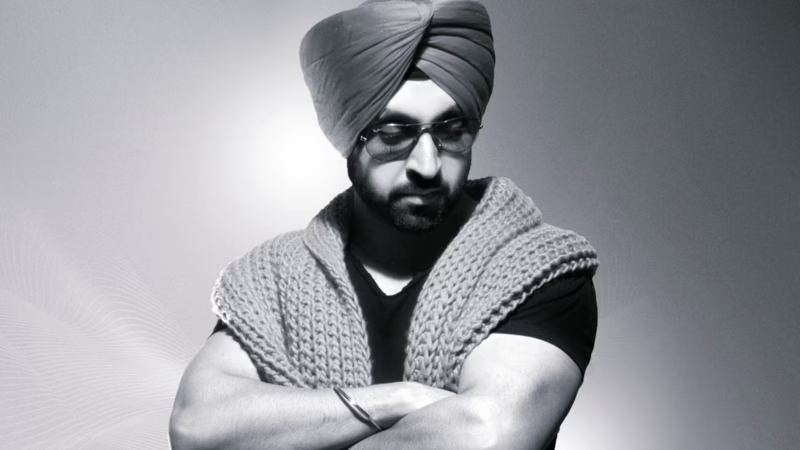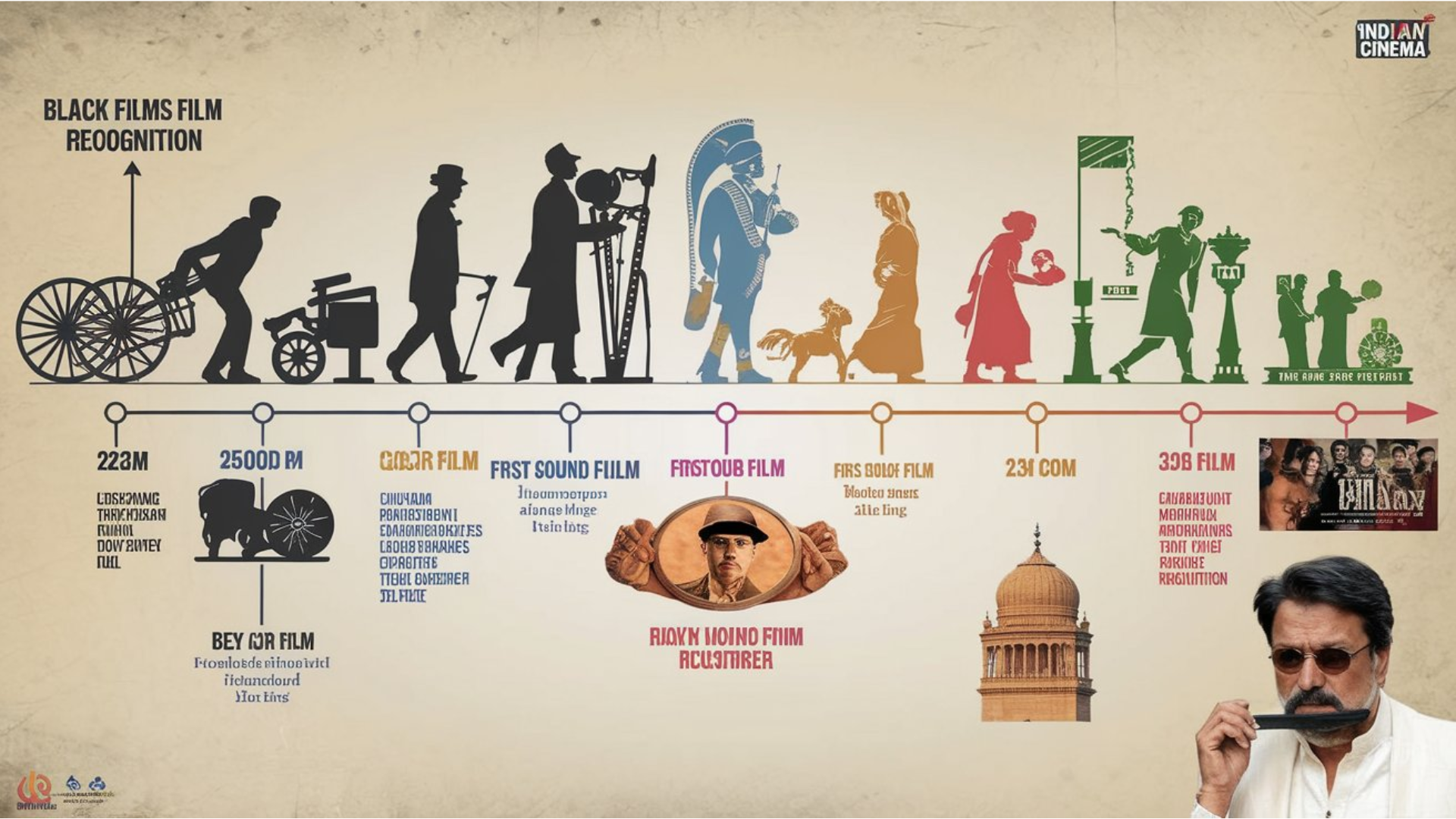Indian cinema has a rich and diverse history that spans over a century. It reflects the country’s cultural evolution and societal changes. This article explores the journey of Indian cinema, starting from its first full-length feature film to its current global presence.
The Birth of Indian Cinema
Indian cinema began with “Raja Harishchandra,” directed by Dadasaheb Phalke in 1913. This silent film marked the beginning of a new era in Indian storytelling. It told the tale of King Harishchandra, renowned for his truthfulness. Phalke’s groundbreaking work laid the foundation for the Indian film industry.
The silent film era continued until the late 1920s. During this time, many filmmakers experimented with storytelling and techniques. Films like “Keechaka Vadham” (1919) showcased early advancements in cinematography and narrative style. However, the arrival of sound in cinema transformed the industry dramatically.
The Talkies Revolution
The late 1920s saw the introduction of sound in Indian cinema. The first Indian talkie, “Alam Ara,” released in 1931, captivated audiences with its dialogues and songs. Directed by Ardeshir Irani, this film marked the beginning of the “talkies” era. It was a commercial success and paved the way for musicals to dominate Indian cinema.
The 1930s and 1940s witnessed the emergence of diverse genres. Filmmakers began exploring themes like social issues, romance, and patriotism. Movies such as “Kismet” (1943) and “Jeevan Naiya” (1936) gained popularity for their engaging narratives and memorable music.
The Golden Age of Indian Cinema
The 1950s and 1960s are often referred to as the “Golden Age” of Indian cinema. This era produced iconic films that are still celebrated today. Directors like Satyajit Ray, Raj Kapoor, and Bimal Roy focused on realism and human emotions.
Satyajit Ray’s “Pather Panchali” (1955) is a prime example. This film garnered international acclaim and showcased India’s cultural landscape. It highlighted the struggles of rural life and won numerous awards, including an honorary Oscar. Similarly, Raj Kapoor’s “Awara” (1951) combined social themes with entertainment, leaving a lasting impact on audiences.
The 1960s also saw the rise of the Bollywood film industry. Songs and dances became integral parts of storytelling. Iconic films like “Shree 420” (1955) and “Mughal-e-Azam” (1960) set new benchmarks in filmmaking. These films showcased elaborate sets, rich costumes, and powerful performances.
The Rise of Regional Cinema
While Bollywood gained prominence, regional cinema also flourished. Industries in languages such as Tamil, Telugu, Bengali, and Malayalam produced remarkable films. Directors like Mani Ratnam and Satyajit Ray became household names in their respective regions.
The 1980s and 1990s brought technological advancements. Filmmakers started experimenting with special effects and new storytelling techniques. Films like “Dilwale Dulhania Le Jayenge” (1995) marked a shift in the romantic genre. It blended traditional values with modern storytelling, appealing to a wide audience.

The Globalization of Indian Cinema
The 2000s marked a significant turning point for Indian cinema. With the advent of the internet, filmmakers gained access to global platforms. Indian films began to receive international recognition. Directors like Mira Nair and Deepa Mehta showcased Indian stories to global audiences.
The success of films like “Lagaan” (2001) and “Slumdog Millionaire” (2008) demonstrated the global appeal of Indian cinema. “Lagaan,” nominated for an Oscar, highlighted India’s colonial past through a gripping narrative. Meanwhile, “Slumdog Millionaire,” although a British production, showcased India’s culture and garnered multiple Academy Awards.
The Digital Era
In recent years, the rise of digital platforms has transformed how films are consumed. Streaming services like Netflix and Amazon Prime Video provide access to a vast library of Indian films. This shift has allowed filmmakers to explore unconventional themes and storytelling techniques.
The success of films like “Gully Boy” (2019) and “Article 15” (2019) highlights the evolving landscape of Indian cinema. These films address pressing social issues while appealing to a younger audience. The emphasis on content-driven cinema has become a significant trend in recent years.
Conclusion
The evolution of Indian cinema reflects the nation’s cultural diversity and societal changes. From its humble beginnings with silent films to its current status on the global stage, Indian cinema has come a long way. With the continuous advancements in technology and storytelling, the future of Indian cinema looks promising.
For more insights into films and reviews, visit Films N Minds. The journey of Indian cinema is ongoing, and it will undoubtedly continue to captivate audiences for years to come. As filmmakers embrace new challenges and themes, Indian cinema will remain a vital part of the global film landscape.
By exploring its rich history and celebrating its achievements, we can appreciate the artistry and creativity that define Indian cinema today.
Here are some outbound links you can include for references related to the evolution of Indian cinema:
- National Film Archive of India: National Film Archive of India
- This site offers resources and information about Indian cinema history and preservation.
- Encyclopedia Britannica – Indian Cinema: Encyclopedia Britannica
- A comprehensive overview of Indian cinema, covering its history and development.
- The History of Indian Cinema – BBC: BBC
- An article detailing the milestones and cultural impact of Indian cinema.
- The Indian Film Industry – The Culture Trip: The Culture Trip
- A brief history and exploration of Indian cinema’s evolution and major films.
- Satyajit Ray and the Golden Age of Indian Cinema – The New Yorker: The New Yorker
- An article focusing on Satyajit Ray and his influence on Indian cinema.
#HistoryofIndiancinema #Indianfilmindustry #Bollywoodevolution #SilentfilmsinIndia #Indiancinemamilestones #SatyajitRayimpact #Indianfilmdirectors #CulturalsignificanceofIndiancinema #Indianmovieshistory #GlobalizationofIndiancinema








